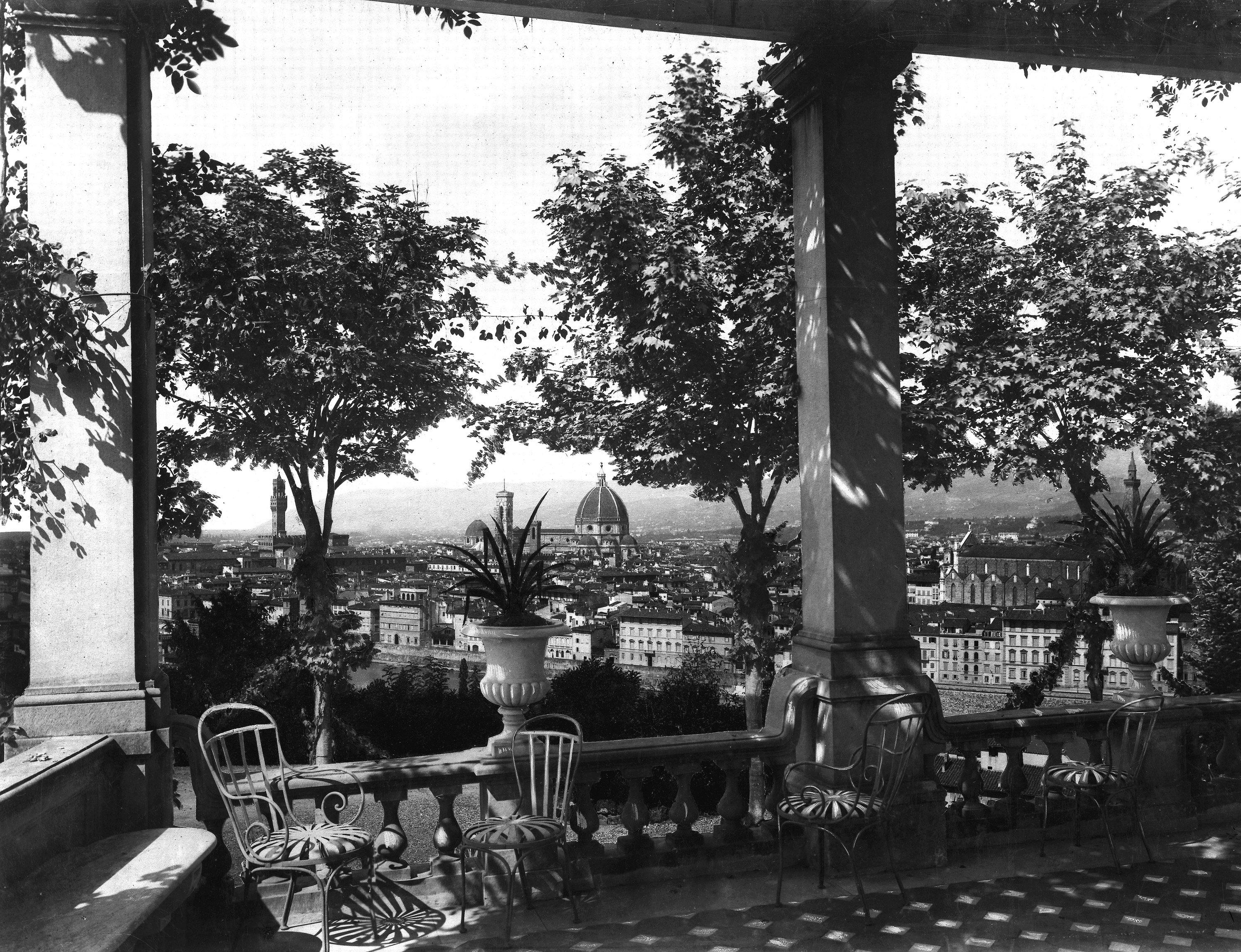Giuseppe and Vittorio Jacquier and the image of Italy
On 28 July 1943, the Gallery Superintendency purchased 7142 glass plate negatives in different formats from the Jacquier company. The collection, which was reduced by about 1,500 negatives following the 1966 flood, consists of photographs taken between 1873 and 1935 by Giuseppe and his son Vittorio. We are in the second half of the 19th century, an era in which the romantic idea, handed down mainly by English travellers at the beginning of the century, of Italy as a treasure chest of archaeological ruins and grandiose architecture persists. Consequently, the clientèle of photographic studios, which were flourishing at this time, mainly demanded images of the panoramas and monuments of Italian cities of art. There is great interest in Tuscan places, especially Florence, the destination of many photographers such as Giuseppe Jacquier from Turin. His studio, which his son Vittorio inherited in 1895, had a large clientèle, even at a national level: French or English tourists passing through, publishers of widely circulated guidebooks, art dealers and antiquarians, collectors and art critics, and administrators who wished to document the construction of new buildings (such as the Montecatini spa).
The work of the two photographers traces the stages in the development of photographic techniques, such as the introduction, from 1880 onwards, of silver bromide glass plates—a type of negative that, thanks to the use of large formats, has better colour sensitivity and, unlike the previous calotype, allows for a more precise image to be obtained, with details well highlighted. Finally, the invention of more manageable cameras and the reduction of exposure time allowed for new compositional choices.
The Jacquier collection can be divided into two thematic areas: architectural and panoramic views of Florence and other cities (not only in Tuscany), and reproductions of works of art from museums and private collections.
The views, permeated with admiration for the art of Western civilisation, are influenced by the tradition of engravers, painters, and even photographers (such as Alinari). The shots, often taken with the sun high and during the summer season, are characterised by great formal elegance and generally follow the traditional 'postcard' routes: views from above, churches, palaces, squares, and bridges. Places revered by 'romantic' tourists (such as the Porte Sante cemetery in Florence) abound. Like so many 19th-century photographers, the Jacquiers centre the image on a recognisable monument, but enrich it with their personal style: a famous building is often framed by windows, balconies, and arches and appears almost as if framed. The perspective is preferably high, and unusual vistas that not all tourists are familiar with, are often chosen. To attract admirers of the medieval past, the technique of photomontage is sometimes used: an example is the photograph where the silhouettes of Dante and Beatrice are placed on the window sill of Giotto's Bell Tower.
The Jacquiers also show great skill in capturing sculptures and paintings, which requires differentiated lighting; an example is the Camposanto in Pisa, a place where natural light is not uniform, being filtered through Gothic windows. The part of the collection dedicated to works of art (photographed not only in Tuscany, but also in cities such as Naples, Rome, and Milan) holds great documentary value both for the study of collectors' tastes of the time and for the history of individual works. Noteworthy are Vittorio's photographs documenting the art collections of Bernard Berenson (at Villa I Tatti near Fiesole) and of Alessandro Contini Bonacossi. There is no shortage of series carried out in public museums, such as shots of Fra Angelico's frescoes in San Marco or works of the Uffizi Galleries.
The dating of the photographs is difficult, as is the attribution to either Giuseppe or Vittorio Jacquier. In some cases, the years of execution can be traced back thanks to documented events such as demolitions or urban rearrangements: an example is the photograph of Piazza del Mercato Vecchio in Florence taken before the demolition of 1888, in which the old Jewish ghetto, still standing, can be seen.
